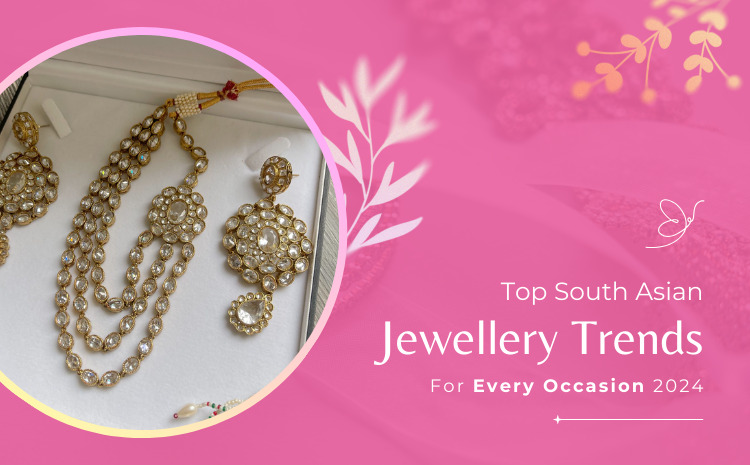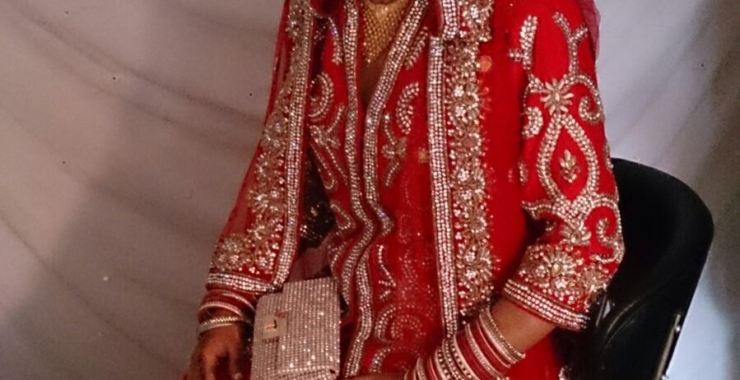Asian Bridal Jewellery: A Definitive Guide
If you’re looking for good pieces of Asian bridal jewellery on a budget, you’ve found the right plac. Here at Dazzle and Bloom, we sell pre-loved fashion and jewellery along with accessories from creative designers (or boutiques).
Asian Bridal Jewellery History
For a long time, people in South Asia have loved wearing jewellery. Historically, they made jewellery from things like ivory, feathers, seeds, and flowers.
After some time, they started using metals like bronze and even shiny metals like gold and silver. If you look at old statues from around 2000 BCE, you’ll see they wear necklaces, hanging earrings, ankle chains, upper arm bracelets, wrist bracelets, and rings.
People used to dive deep into the ocean to find pearls, and because there were so many shiny stones around, jewellery with stones became very popular.
In the 1600s, the Mughal rulers brought new styles of jewellery-making from Islamic traditions. The kings and queens wore fancy jewellery with big, shiny gems and pearls.
Gold jewellery is really important for saving money, especially for women in South Asian countries. It was often the only thing of value they were allowed to have. In older times, the more jewellery a woman had, the richer and more important she seemed.
In the early 1900s, people started making fake gems, which meant more people could buy jewellery without spending a lot of money.
All The Solah Shringar Of Asian Bridal Jewellery
Asian bridal jewellery’s main purpose is to adorn and complement the bride’s attire, a tradition that dates back thousands of years and continues to the present day.
Several of the following bridal jewellery pieces are part of the “Solah Shringar,” a Hindu cultural custom that translates to “16 bridal adornments” and lists 16 different ways for a bride to adorn herself from head to toe.
1. Necklace (or “Haar”)
In Asian wedding outfits, the star of the show is this awesome long gold chain that’s really heavy. It’s usually all sparkly with special stones.
The Rani Haar, which means ‘Queen’s Necklace’ in English, is also called Sita haar or Haram. What makes it different from regular necklaces is how long it is, the big decoration hanging from it, and the bunch of gold beads it has.
2. Matha Patti With Maang Tikka
The Matha Patti is a beautiful piece of bridal Asian jewellery that brides wear on their heads. It’s like a headband and has a main chain that drops down the forehead, called a maang tikka, and some chains that go across the top of the forehead.
3. Haath Phool
The haath phool is a unique piece of Asian bridal jewellery that blends a bracelet with a ring, linked together by a gold chain or strings of beads. This lovely accessory, whose name means ‘hand’s flower,’ adds a touch of grace and elegance.
4. Nath Nose Ring
The nath is a special nose ring that brides wear at Asian weddings. It’s made in many different sizes, shapes, and colours and is really liked all over South Asia.
Depending on where you are, a bride can wear the Nath on either side of her nose, and it often has a gold chain that links it to her ear. A long time ago, it was a way to show that a woman was married.
5. Jhumka
Jhumka earrings, which people also call jhumki, look like little bells and have been around since ancient times, starting in South India around 300 BCE. They’re a favourite in jewellery boxes all over South Asia, especially when it’s time for weddings.
6. Mangalsutra
There’s also this necklace (usually made of gold pendant with black beads) called the mangal sutra that the groom ties around the bride’s neck during a special part of the wedding called ‘Mangalya Dharanam,’ which means ‘wearing the lucky.’ This necklace is a sign that a woman is married.
7. Thumb Rings
A ring that is worn on the thumb of the bride and has a mirror embedded in it so that she can see the groom, traditionally part of the Solah Shringar.
8. Kamarbaandh
An ornamental waistband or chain traditionally worn by the bride and included in the Solah Shringar. Historically worn by both men and women as waist belts, today the Kamarbaandh is a mainstay of ladies’ fashion in the Indian subcontinent.
9. Bajubaandh
The Bajubaandh, also called Ananta, Angada, or Vanki, is a bracelet that fits snugly around the upper arm. It’s a classic piece of wedding jewellery in Asia, showing off a mix of royal vibes and bravery from old tribal traditions.
10. Chuda
Chuda is a set of bangles a bride wears on her wedding day. Known as Chuda or Chudi too, these bangles are usually red and white. They used to be made of ivory, but now they’re mostly plastic with pretty designs. It’s a big deal in Punjab and worn in other northern parts of India like Uttar Pradesh, Rajasthan, and Gujarat.
11. Payal
Payal, or anklets, are jewellery pieces that wrap around the ankle. These anklets are linked to dance and are often the first piece of Asian Bridal jewellery given to a child or to a woman when she gets married and goes to her new home.
12. Bichhiya
The Bichhiya is a toe ring that brides wear, usually on the second toe. The groom puts it on the bride’s toes during the wedding, and it’s a sign that she’s married.
You Can Buy Bridal Asian Jewellery From Dazzle & Bloom!
Now, that you know everything about the traditional Asian Bridal Jewellery pieces, you can try to find designer versions of each on our platform.
Some brides find that if they order these pieces of jewellery brand-new, they become rather pricey. That’s a case for even fake gold and gems!
That’s why we have come up with the most convenient and effective online marketplace for reselling bridal clothing and accessories. Explore our website today to find the piece of your dreams.
Leave a Reply
You must be logged in to post a comment.



